We arrived in Broome on the top of the North West coast of Western Australia. It was not as hot as the central desert but the humidity must have been around 100% and very uncomfortable. In the dry heat of the desert we had been drinking a lot of water but in this humidity we have to drink even more to replace the constant sweat. I have never drunk so much water. In contrast to the Eastern seaboard of Cairns where the rains had been plentiful, here in Broome, the rain failed leaving the rivers almost empty and at summer levels. But when it does rain, it does not mess about. During our first night, we were awoken at 2.00am by the immense noise of a tremendous thunderstorm that passed directly overhead. Apart from the deafening thunder, the rain beat down so hard that we had to speak almost at a shout. Two and a half centimeters (about 1 inch) of rain fell in 20 minutes and, at the time, the drains could not cope, flooding the roads and filling all the dips but, the next morning, only high water debris left any clue as to the night’s downfall.
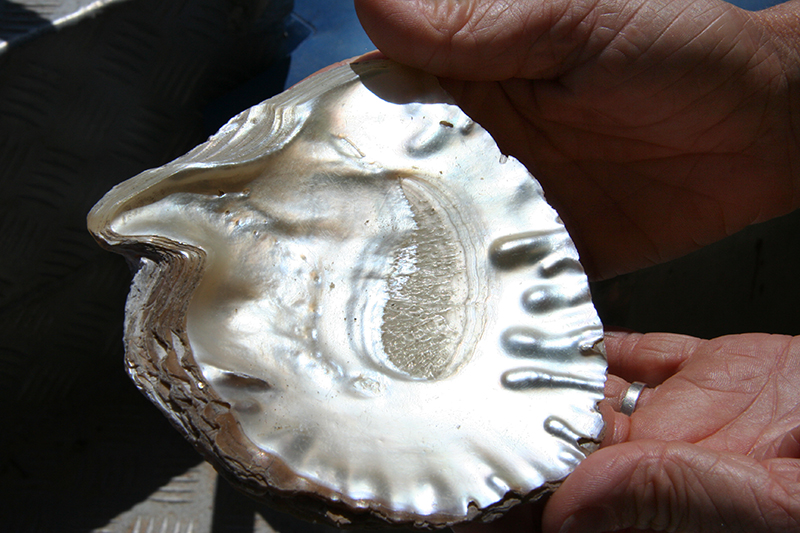 But it has not deflected Broome from its twin industries of pearling and tourism. It is a small, outback town at heart built as a pearling centre by Japanese entrepreneurs in the 1880s. It attracted Chinese and Malays who joined local (often enslaved) Aboriginal divers in the dangerous side of the business. Pearl diving was in open water and, initially without breathing apparatus. Many divers were killed by sharks or got the bends or drowned. Pearling peaked in the early 1900s when the town’s 400 luggers supplied 80% of the world’s mother-of-pearl that was mainly used for buttons. The Second World War (which took all the young white males and interned all the Japanese) and the advent of the plastic button decimated the industry and the town almost totally collapsed. Today pearl farming producing cultured pearls has replaced open sea diving and a handful of family run companies have the license to continue to provide the world with Broome pearls.
But it has not deflected Broome from its twin industries of pearling and tourism. It is a small, outback town at heart built as a pearling centre by Japanese entrepreneurs in the 1880s. It attracted Chinese and Malays who joined local (often enslaved) Aboriginal divers in the dangerous side of the business. Pearl diving was in open water and, initially without breathing apparatus. Many divers were killed by sharks or got the bends or drowned. Pearling peaked in the early 1900s when the town’s 400 luggers supplied 80% of the world’s mother-of-pearl that was mainly used for buttons. The Second World War (which took all the young white males and interned all the Japanese) and the advent of the plastic button decimated the industry and the town almost totally collapsed. Today pearl farming producing cultured pearls has replaced open sea diving and a handful of family run companies have the license to continue to provide the world with Broome pearls.
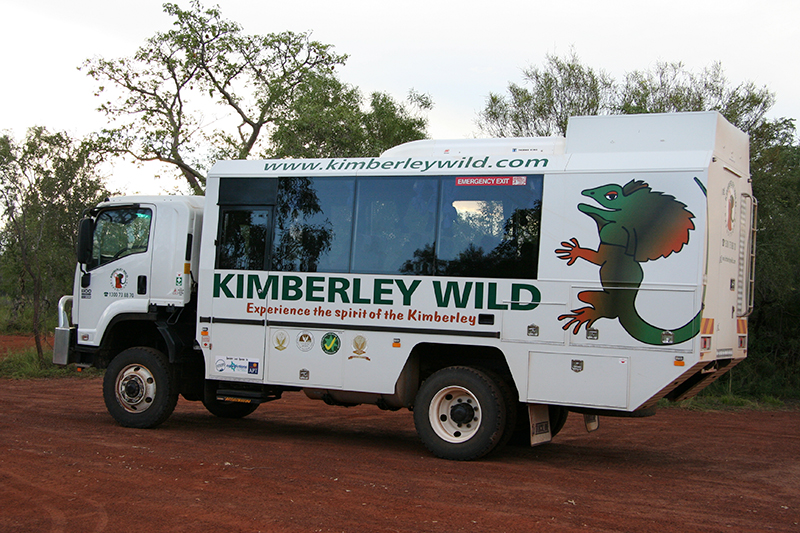 Tourism is only about 10 years old and the locals are still trying to learn how to do it (although they think they have cracked it). Visitors are attracted to the powdery white sands of the beaches and the more arid clay-baked landscape of The Kimberleys which holds some of Australia’s most spectacular, remote and unspoilt scenery. It is this that has brought us to Broome and, fortunately, the so called wet season has officially just finished and the tour companies are just starting their first excursions of the year. The major benefit for us was that other visitors had not yet arrived in numbers so our tour to the Kimberleys was only half full. The extra space and the smaller group that the guide had to handle made the trip far more enjoyable.
Tourism is only about 10 years old and the locals are still trying to learn how to do it (although they think they have cracked it). Visitors are attracted to the powdery white sands of the beaches and the more arid clay-baked landscape of The Kimberleys which holds some of Australia’s most spectacular, remote and unspoilt scenery. It is this that has brought us to Broome and, fortunately, the so called wet season has officially just finished and the tour companies are just starting their first excursions of the year. The major benefit for us was that other visitors had not yet arrived in numbers so our tour to the Kimberleys was only half full. The extra space and the smaller group that the guide had to handle made the trip far more enjoyable.
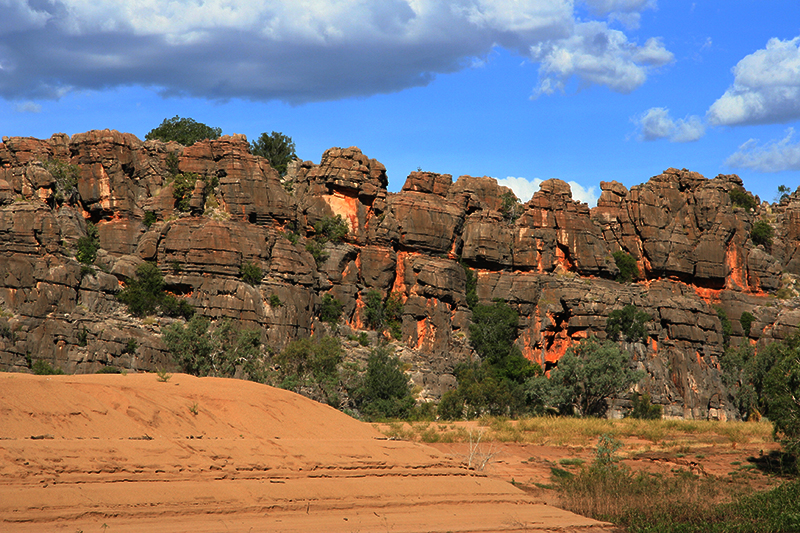 With just two seasons (wet and dry), the Kimberleys is a land of extremes. In the wet season it is mostly impassable as the rivers and lakes overflow vast areas of land. Roads and bridges are underwater, crocodiles become king and the area becomes a sodden, red marsh. In the dry season, most of the rivers dry up, the crocs stay in small well defined areas and the land becomes hot and arid. It is a vast area, 420,000 sq km of wilderness (three times the size of England), with huge flat plains that give way to panoramic ranges cut by steep stony gorges and surrounded by pockets of tropical rainforest. An all wheel drive vehicle is a necessity for getting about and eating every meal ‘outside’ is unavoidable.
With just two seasons (wet and dry), the Kimberleys is a land of extremes. In the wet season it is mostly impassable as the rivers and lakes overflow vast areas of land. Roads and bridges are underwater, crocodiles become king and the area becomes a sodden, red marsh. In the dry season, most of the rivers dry up, the crocs stay in small well defined areas and the land becomes hot and arid. It is a vast area, 420,000 sq km of wilderness (three times the size of England), with huge flat plains that give way to panoramic ranges cut by steep stony gorges and surrounded by pockets of tropical rainforest. An all wheel drive vehicle is a necessity for getting about and eating every meal ‘outside’ is unavoidable.
Our driver, a wiry chap called Garry, doubled up as guide, cook and general factotum but would not do dishes, they were left to us. As we travelled the 300km from Broome into the heart of the Kimberleys, he kept up a constant lecture on everything to do with our trip. We learnt history, biology, geology, botany and philosophy. His knowledge of the area was impressive and entertaining and, as he talked, there was the extra comfort of knowing that he was not asleep.
We learnt that there are two types of termite here: the Cathedral termite and the Magnetic termite. The Cathedral termite builds its nest underground with an above ground roof that can often reach 3 metres. The roof is there to keep the nest cool in hot weather and is often shared by snakes and other reptiles. The Magnetic termite builds a nest that orientates north to south so that one side is always in the cooler shade and they move from side to side as appropriate. Find a Magnetic termite’s nest and you will always have a compass point.
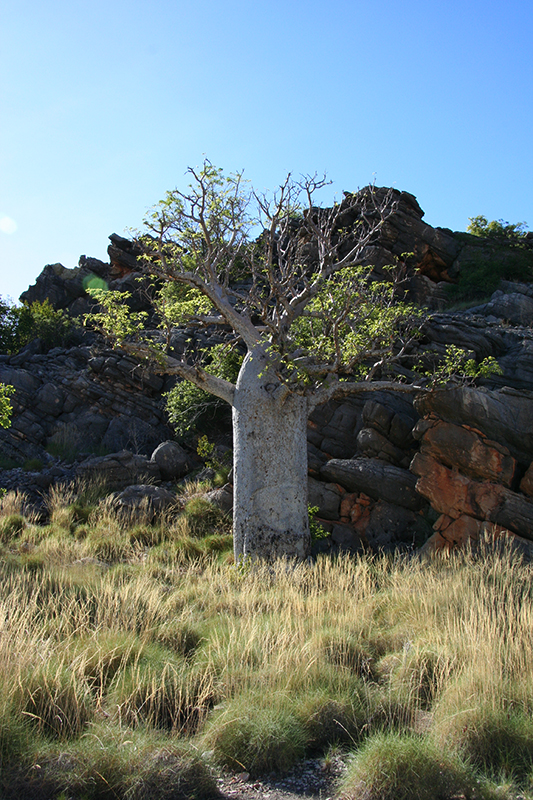 But the oddest object in the region is the boabab tree. Found only in this part of Australia, it is a native of Africa and Madagascar and no one knows how it came to establish itself here. It appears very symbolic with its immense swollen trunk and striking silhouette. It is also known as the upside-down tree because the branches only grow at the top and look more like roots. It is so distinctive that I clearly remember seeing them when I travelled across Africa when I was 18 years old and was so taken by the chaotic appearance of the tree that I took some seeds back home and tried (and failed) to grow them. They grow incredibly slowly: a smaller one could be 100 years old and one of the larger specimens could easily be over 1,000 years old. All ages are estimated because the tree does not have rings capable of being counted.
But the oddest object in the region is the boabab tree. Found only in this part of Australia, it is a native of Africa and Madagascar and no one knows how it came to establish itself here. It appears very symbolic with its immense swollen trunk and striking silhouette. It is also known as the upside-down tree because the branches only grow at the top and look more like roots. It is so distinctive that I clearly remember seeing them when I travelled across Africa when I was 18 years old and was so taken by the chaotic appearance of the tree that I took some seeds back home and tried (and failed) to grow them. They grow incredibly slowly: a smaller one could be 100 years old and one of the larger specimens could easily be over 1,000 years old. All ages are estimated because the tree does not have rings capable of being counted.
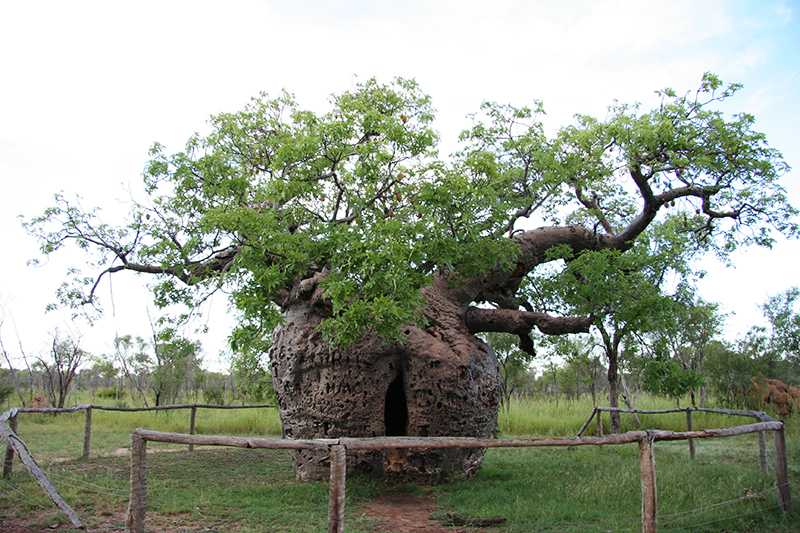 Up until early this century the enlarged hollow trunks had the unfortunate distinction of being used as prison trees to hold Aboriginal prisoners overnight. One 1500 year old, hollow tree with a girth of almost 15 metres is known as The Prison Tree having held many captured locals on their journey to the coast to be used as slave pearl divers. Copies of black and white photographs at the site show around 10 sorry-looking chained Aboriginals who had been crammed inside the tree trunk overnight standing next to a horse mounted guard.
Up until early this century the enlarged hollow trunks had the unfortunate distinction of being used as prison trees to hold Aboriginal prisoners overnight. One 1500 year old, hollow tree with a girth of almost 15 metres is known as The Prison Tree having held many captured locals on their journey to the coast to be used as slave pearl divers. Copies of black and white photographs at the site show around 10 sorry-looking chained Aboriginals who had been crammed inside the tree trunk overnight standing next to a horse mounted guard.
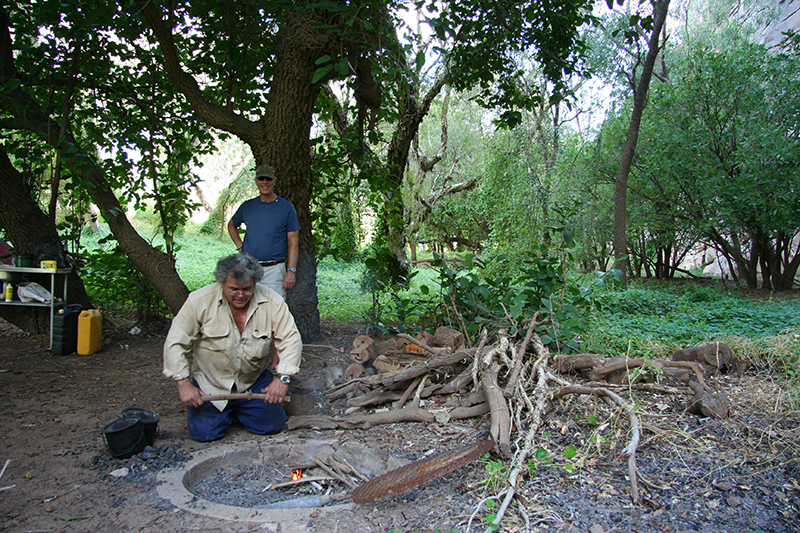 Our trip also took in an educative 2 hours with a local white man who was married to an Aboriginal. Bill is of rotund build, short and stocky with a mop of graying hair that has not seen a brush for many years (unless it has been fashionably disheveled) and wearing clothes that have been ingrained with bush debris. Apart from looking like the victim of a car crash, we had been warned that he possessed a legendary rudeness but, today, maybe because we were the first tour of the season, he was in a jovial mood. Nonetheless, he would not shake my outstretched hand because he ‘wouldn’t remember my name for two seconds’ and, apparently, that might annoy me. He obviously did not realise that I am the calmest person on the planet, never known to get upset, and a veteran of several Rhino golf tours (and, therefore, immune to abuse).
Our trip also took in an educative 2 hours with a local white man who was married to an Aboriginal. Bill is of rotund build, short and stocky with a mop of graying hair that has not seen a brush for many years (unless it has been fashionably disheveled) and wearing clothes that have been ingrained with bush debris. Apart from looking like the victim of a car crash, we had been warned that he possessed a legendary rudeness but, today, maybe because we were the first tour of the season, he was in a jovial mood. Nonetheless, he would not shake my outstretched hand because he ‘wouldn’t remember my name for two seconds’ and, apparently, that might annoy me. He obviously did not realise that I am the calmest person on the planet, never known to get upset, and a veteran of several Rhino golf tours (and, therefore, immune to abuse).
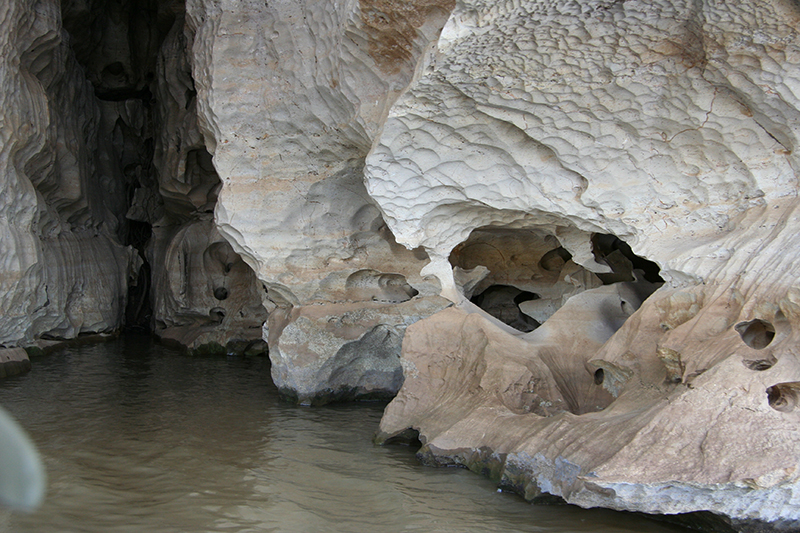 He then took us on a boat trip up the limestone overhangs of the Geike Gorge where the river water had smoothed the rock in contrast to the craggy, jagged edges of the rest of the rock wall. We passed two crocodiles hiding amongst the crevices and Bill reminded us that the whole of this area was no go for swimming. ‘They like nothing better than a soft, plump tourist,’ he growled.
He then took us on a boat trip up the limestone overhangs of the Geike Gorge where the river water had smoothed the rock in contrast to the craggy, jagged edges of the rest of the rock wall. We passed two crocodiles hiding amongst the crevices and Bill reminded us that the whole of this area was no go for swimming. ‘They like nothing better than a soft, plump tourist,’ he growled.
At the turning point of the trip, he took us up the bank and into a leafy glade where he boiled water for tea and coffee (which he had forgotten to bring) and, using members of the tour group as props, started to tell us about the local Aboriginal culture. Of course, there was much that we were not allowed to know, but what he did tell us was fascinating. At birth, everyone is given a name and a ‘skin name’ which will determine the course of life: what they can do, who they can befriend, who they can marry and what tasks will be assigned to them. Everyone is subject to the good of the whole and no one can be an individual or a rebel or upset the system. If someone transgresses a law, they have the opportunity for a second chance and, should their family die, they will get given another. I asked Bill how he had been able to marry a local: it seemed it involved ‘negotiations’ that were helped by the fact that his mother-in-law was the community elder.
Bill’s talk about local customs and culture made us feel that the local Aboriginals were a proud, pragmatic people who had a simple but very effective approach to life and its challenges. It all seemed to turn to dust later that evening when we popped into the local pub for a drink. The place was crawling with the less attractive members of Bill’s community who had a simple goal: to drink as much as possible and then pass out. Our newly found respect suddenly began to hang by a thread. Alcohol certainly seems to be the scourge of the local community: back in Broome we walked after dinner back to our B&B past numerous locals lying all over the place, littering the pavements and parks until the police wearily rounded them up before leaving them in a purpose built drying-out house next to the regional prison.
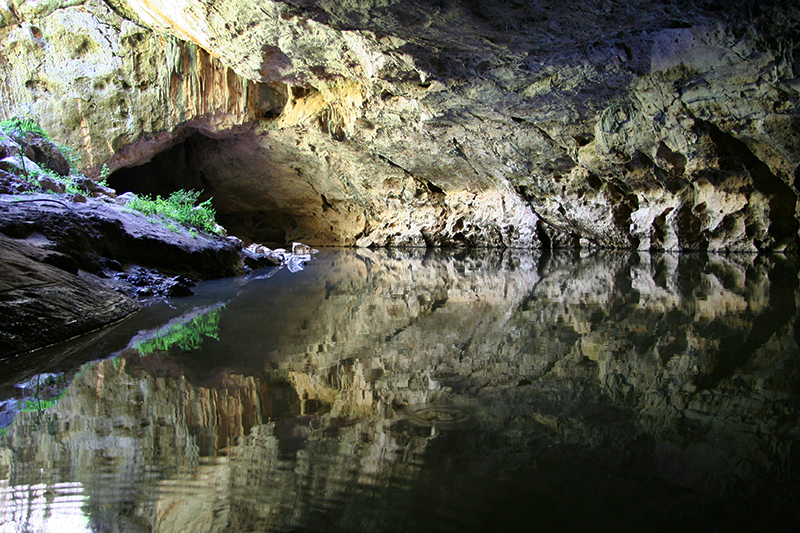 Our Kimberley trip took us to a place called Tunnel Creek, a cave that runs right through the rocky Napier Range that has a number of cave systems running off it and plenty of subterranean wildlife (ghost bats mostly). The cave was famously used by a local named Jandamarra who killed a policeman and shot several white cowhands before he was eventually cornered here and shot dead. Naturally, the locals call him a freedom fighter and still revere his name. Perhaps it was the fact that he was nicknamed Pigeon that made him so angry. The tunnel would normally have a stream running through it at this time of year that would make it impossible to walk but the poor wet season had left only water waist high in places and we were able to enjoy its full length. But not without sending our guide first in case there was still the odd croc lurking in the shadows.
Our Kimberley trip took us to a place called Tunnel Creek, a cave that runs right through the rocky Napier Range that has a number of cave systems running off it and plenty of subterranean wildlife (ghost bats mostly). The cave was famously used by a local named Jandamarra who killed a policeman and shot several white cowhands before he was eventually cornered here and shot dead. Naturally, the locals call him a freedom fighter and still revere his name. Perhaps it was the fact that he was nicknamed Pigeon that made him so angry. The tunnel would normally have a stream running through it at this time of year that would make it impossible to walk but the poor wet season had left only water waist high in places and we were able to enjoy its full length. But not without sending our guide first in case there was still the odd croc lurking in the shadows.
We had no better luck looking for crocs at Windjana Gorge, a 3.5km long gorge that is said to be an ancient limestone reef created in Devonian times, where the waters of the Lennard River obviously held many reptiles but we could see only their tracks into the river. At least it meant they were not hiding in the long grass behind us, between the river and the steep wall of the gorge. Neither were there any pythons about so it seemed that there was an excellent chance that we would make it back to Broome alive.
One of Broome’s great attractions is known as ‘the stairway to the Moon.’ It happens when a full moon rises from the Indian Ocean and casts a silvery light over the waves as they glide along the mango mudflats, creating a stairway effect. The phenomenon gets everyone excited and tourists and locals alike crowd the beaches to catch a photograph of the stairway. Being a full moon while we were in residence, we got down to beach an hour before moonrise to ensure we got a good view, camera at the ready. The moon rose in a dirty orange glow and, as it cleared the water, turned into bright silver that cast reflections that ran all along the mudflats and up to our feet. Unhappily, we do not have a camera stand and our efforts at nighttime photography merely resulted in less than round images. I have to say that, having looked at several professional photographs of the stairway to the moon, and not having been told what it was supposed to represent, I would not be able to see anything more than a very nice photo of the moon rising over the sea. Still, I suppose every bit of marketing helps.
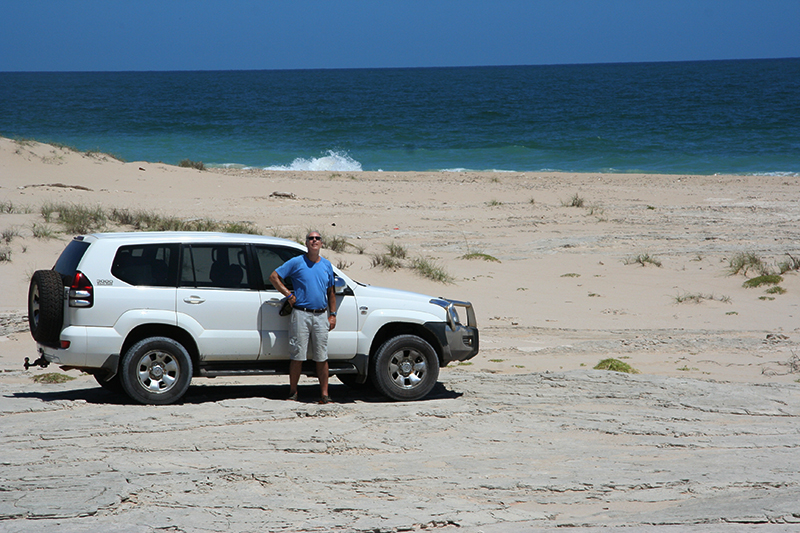 A visit to the outback would not be complete without a thrash along a dirt road in a 4×4. We hired an appropriate vehicle that had shedloads of low-end grunt from the nearest shop where the girls behind the counter could not have been less helpful. With a 4-litre turbo-charged diesel engine we were ready to cross the Indian Ocean.
A visit to the outback would not be complete without a thrash along a dirt road in a 4×4. We hired an appropriate vehicle that had shedloads of low-end grunt from the nearest shop where the girls behind the counter could not have been less helpful. With a 4-litre turbo-charged diesel engine we were ready to cross the Indian Ocean.
But first we went to a pearl farm. It was off road. The track was narrow, twisty, soft sanded and full of deep wet patches but our car went through the middle of everything at 70kph. It coped admirably, the suspension with real bouncy springs had us jumping about like a kangaroo and, after a few slides and slithers, we arrived at the pearl farm with the white bodywork of the car impressively dirty.
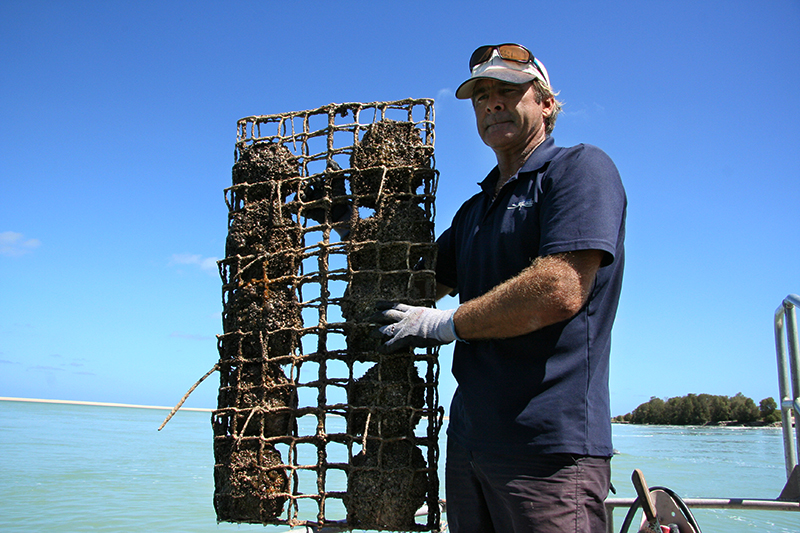 The farm was geared up for tours which started with an amusing lecture delivered by a Pommie East-Ender about how pearls grow in Oyster shells (they slice open the gonad and stick a piece of shell in it) and how they manage to get up to four pearls from one shell (they keep slicing open the gonad and put ever increasingly large bits of shell into it). The blokes in the audience, to a man, were sitting cross legged wearing a pained look. The girls laughed. But they all stopped laughing and paid particular attention when being told how to spot pearls of especially good quality and how to recognise fakes. This was confidential information that should have been passed to men only and the males in the group now knew that they could never buy a pearl again without their wives/girlfriends critically examining the gift for lustre, size, shape, colour and skin. Obviously, the tour finished in the shop where East End Pommie did his very best to palm off some high priced product to the ladies by allowing them to wear the pearls while he finished his chat. Not one man agreed to a purchase: punishment for too much information.
The farm was geared up for tours which started with an amusing lecture delivered by a Pommie East-Ender about how pearls grow in Oyster shells (they slice open the gonad and stick a piece of shell in it) and how they manage to get up to four pearls from one shell (they keep slicing open the gonad and put ever increasingly large bits of shell into it). The blokes in the audience, to a man, were sitting cross legged wearing a pained look. The girls laughed. But they all stopped laughing and paid particular attention when being told how to spot pearls of especially good quality and how to recognise fakes. This was confidential information that should have been passed to men only and the males in the group now knew that they could never buy a pearl again without their wives/girlfriends critically examining the gift for lustre, size, shape, colour and skin. Obviously, the tour finished in the shop where East End Pommie did his very best to palm off some high priced product to the ladies by allowing them to wear the pearls while he finished his chat. Not one man agreed to a purchase: punishment for too much information.
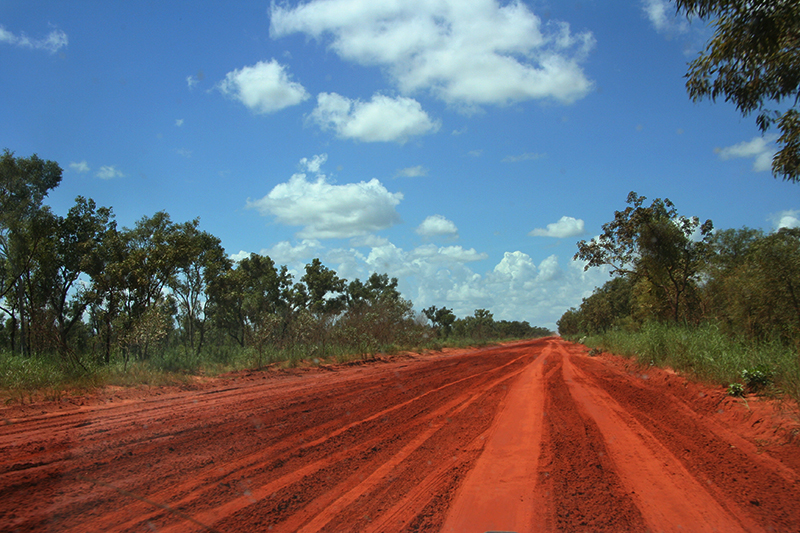 Having escaped with my wallet almost intact (mercifully Debbie bought only shells), we headed north on the dirt road that had just reopened after the rains. This was a red, muddy highway with plenty of space to avoid the worst swamps and water filled undulations. To have avoided these hazards would have been gutless – we were, after all, in a hire car – and we ground our way along the road, forwards, backwards and sideways until tarmac showed up and spoiled the fun.
Having escaped with my wallet almost intact (mercifully Debbie bought only shells), we headed north on the dirt road that had just reopened after the rains. This was a red, muddy highway with plenty of space to avoid the worst swamps and water filled undulations. To have avoided these hazards would have been gutless – we were, after all, in a hire car – and we ground our way along the road, forwards, backwards and sideways until tarmac showed up and spoiled the fun.
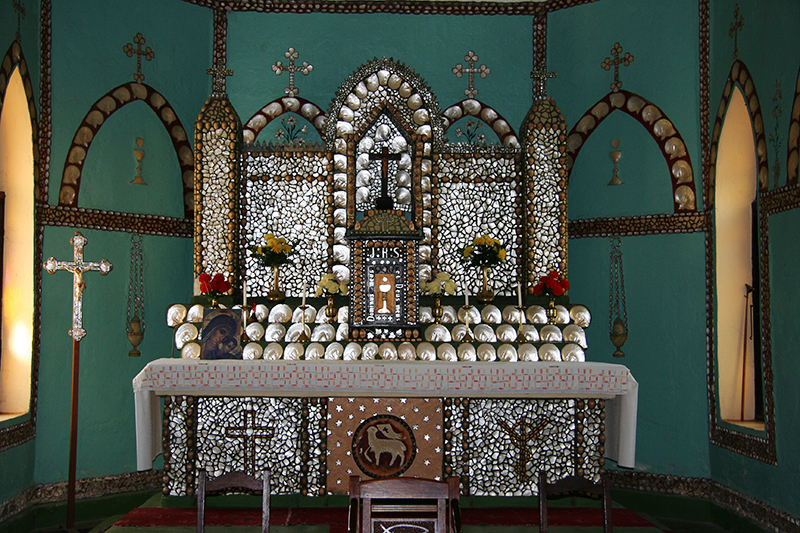 We wanted to stop for lunch at a town called Beagle Bay (which is landlocked) for lunch but the entire place was shut except for the church. It was built by German missionaries in 1890 and has a beautiful white pearl shell altar and shell encrusted tiles on the floor, the walls and the pictures.
We wanted to stop for lunch at a town called Beagle Bay (which is landlocked) for lunch but the entire place was shut except for the church. It was built by German missionaries in 1890 and has a beautiful white pearl shell altar and shell encrusted tiles on the floor, the walls and the pictures.
Driving out of town, we did eventually find our way to the sea by travelling along tracks that were unmarked except for empty beer bottles, but the coastline was fringed with mango trees that crept into the sea indicating the presence of saltwater crocodiles. It was tempting to try to take them on with our big, bulky car, especially as I had paid extra money to reduce the insurance excess to zero, but none of the beasts would come out for a fight and we had to leave disappointed.
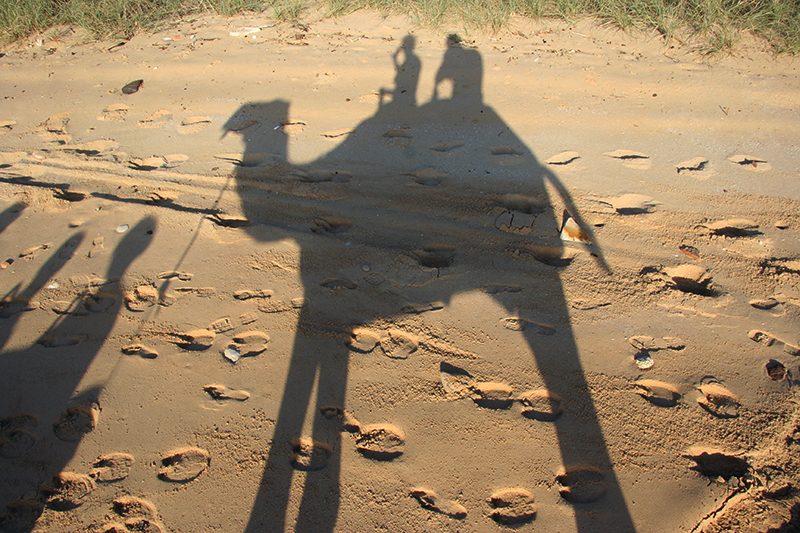 When we got back to Broome, I’m ashamed to admit that we became real tourists and took a sunset camel ride with about a hundred other red skinned visitors along the beach of Cable Bay. Our poor animal was 28 years old and struggled along at the back of the group for his last walk of the day. It was actually rather fun but impossible to take a decent photograph while seated on a moving camel. So our photos are somewhat miss-composed apart from the ones taken by the walking handlers. On balance, Debbie considered that she would stick to horse riding.
When we got back to Broome, I’m ashamed to admit that we became real tourists and took a sunset camel ride with about a hundred other red skinned visitors along the beach of Cable Bay. Our poor animal was 28 years old and struggled along at the back of the group for his last walk of the day. It was actually rather fun but impossible to take a decent photograph while seated on a moving camel. So our photos are somewhat miss-composed apart from the ones taken by the walking handlers. On balance, Debbie considered that she would stick to horse riding.

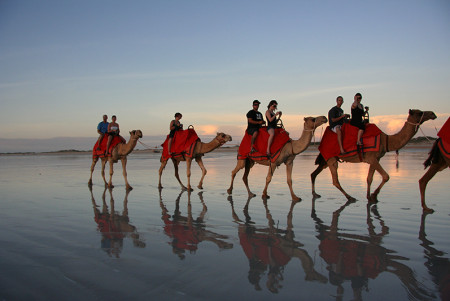
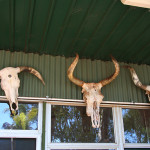
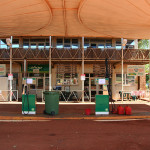
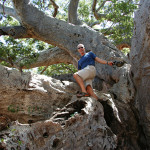
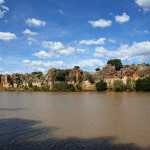
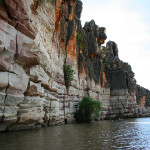
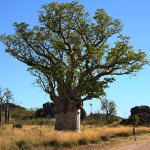
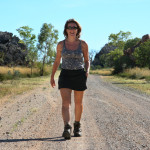
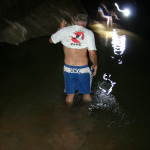
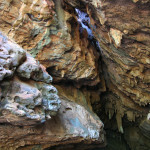
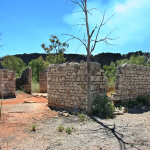
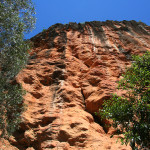
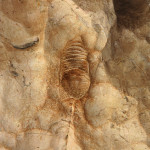
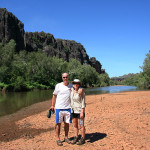
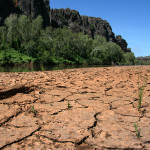
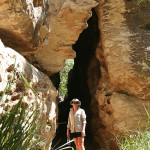
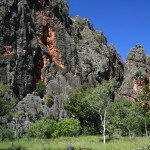
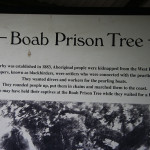
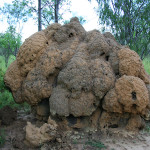
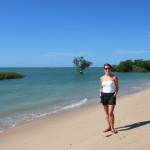
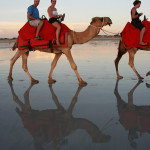
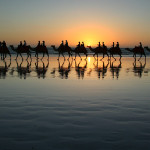
No comments yet.